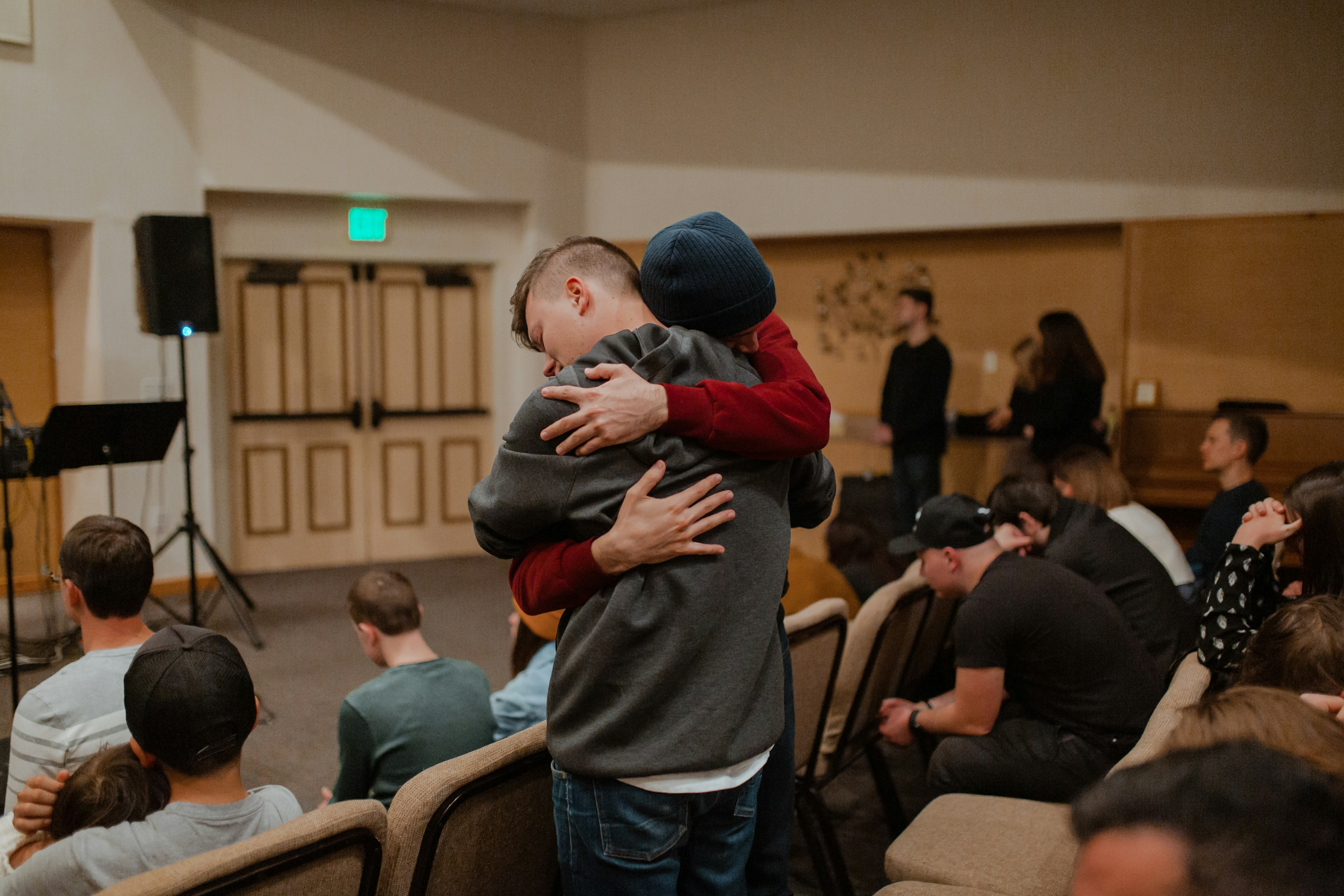Key Takeaways: Some common signs of trauma bonding include validating the actions of the abuser, trying to minimize how bad the behaviors of the abuser are, defending the actions of the abuse, blaming themselves, accepting the abuse as their fault, being ambivalent to take steps to end the relationship, and isolating themselves from friends and family members. If you or someone you know is struggling with trauma bonding, it is important to seek help from a professional.
What does “trauma bond” mean? Trauma bonding is a term used to describe a type of insecure attachment that is formed between individuals who are engaged in a traumatic or abusive relationship. The bond is created due to a cycle of abuse and positive reinforcement. Trauma bonding and Stockholm syndrome are often compared to one another.
In relationship trauma specifically, after each abusive experience, the abuser asserts their love and regret and falsely tries to make the relationship feel safe and needed for the abused person.
A trauma bond can form over days, weeks, or months. Trauma bonding is one of the reasons leaving an abusive relationship can feel so overwhelming and conflicting since there are both positive and negative feelings associated with the abuser. Breaking a trauma bond can be challenging, but recovery is possible. Read on to learn how to know if you’re trauma bonded, trauma bonding examples, and how to seek gaslighting and narcissistic abuse recovery.
Why Does Trauma Bonding Occur?
Psychoanalyst John Bowlby has done a vast amount of research on healthy and insecure attachments. A healthy attachment is formed when, “more often than not,” our needs and sense of safety are met in the relationship. Different types of insecure attachments can begin to form if our needs or sense of safety is not always met, such as growing up in a toxic household.
There is a greater risk for trauma bonds to develop in individuals who grew up with unhealthy attachment styles in their childhood, such as if their parent or caregiver showed them inconsistent or disrupted displays of love and affection. Trauma bonding in family situations and bonding over shared trauma is quite common and can also be a precursor to gaslighting and narcissistic abuse later in life. Witnessing family violence can also create a trauma bond.
During an abusive relationship, our mind and body work consistently to adapt and survive. Our fight, flight, and freeze responses kick into high gear, leading us to be hypervigilant and attentive to what the abuser is doing. This could look like trying to understand or rationalize the abuser’s behaviors to be able to predict and survive the next experience.
Negative beliefs about ourselves will form, often ones like
- “I’m not good enough.”
- “I can’t be loved.”
- “I’m powerless.”
- “It’s my fault.”
It is easier for the abused person to feel they have some control or say in what happens next even from a distorted negative perspective.
These beliefs, although harmful to our mental health, feel less overwhelming than the anxiety of realizing we have no control over what happens next to us. Ultimately, this happens because all the information we receive through relationships, body, and mind is through a fight/flight/freeze lens. When you are living in a headspace that can’t healthily process thoughts and experiences, you start to form a narrative that tricks you into believing you have feelings or empathy for the abuser.
Can a trauma bond become healthy? Not typically, unless there is therapy for narcissism or domestic violence counseling for abusers, and even then, it is a slippery slope. Remember that domestic violence need not always be physical—it is entirely possible to develop PTSD from psychological abuse or PTSD from narcissistic abuse.
What Are Examples of Trauma Bonding?
While trauma bonding can occur between two partners in a romantic relationship, this insecure attachment style can also happen in abusive family relationships. If the abused are children, an insecure attachment will form between them and the abuser, who may be a parent or caregiver. A scenario of a younger generation taking care of an older generation is possible as well when there is elder abuse involved.
It may also not be a partner or family member. Be aware of the signs of an abusive friendship, as a close friend can still have a taste of trauma bonding and the narcissist. Outside of a friend, romantic, or family setting, are those who are exploited or have been held captive for various reasons such as illegal employment, sex trafficking, and kidnapping or hostage-taking situations. Often referred to as Stockholm Syndrome, this is like trauma bonding in that the person held captive comes to have feelings of trust or affection for the person holding them against their will.
Common Signs of Trauma Bonding
In cases of trauma bonding, you may notice signs of a person struggling with post-traumatic stress disorder (PTSD) symptoms such as hypervigilance, insomnia, depressed or anxious mood, nightmares, flashbacks, or negative beliefs impacting the ability to have healthy relationships. Signs of abuse or a potential trauma bond may include:
- Validating the actions of the abuser
- Trying to minimize how bad the behaviors of the abuser are
- Defending the actions of the abuse
- Blaming themselves, accepting the abuse as their fault
- Being ambivalent about taking steps to end the relationship
- Isolating themselves from friends and family members
How to Break a Trauma Bond
Many wonder how to repair an abusive relationship. In most cases, the best answer is to leave and seek treatment for narcissistic abuse or therapy for the trauma of domestic violence. Recovering from domestic abuse may be a slow, but well worth it, process.
Breaking a trauma bond is dependent on each scenario, which could require the support of law enforcement or legal actions, child protective services, elder protective services, and intimate partner violence (IPV) resources. For the abused looking to heal, it would be beneficial to engage in therapy with a professional who can support people in gaslighting and narcissistic abuse recovery or trauma bonding recovery.
With the support of a therapist, a client can move through the stages of trauma bonding recovery and participate in trauma-specific modalities such as Eye Movement Desensitization and Reprocessing (EMDR), somatic experiencing, trauma-focused cognitive behavioral therapy (TF-CBT), and exposure therapy.
Keep in mind that each person’s story is unique and relationships after narcissistic abuse can be devastating, with some clients even reporting trauma bond withdrawal symptoms. With the support of a professional, recovering from abuse will follow a plan based on the strengths, needs, abilities, and preferences of the client will be developed so they can heal and move forward positively.
Knowing When to Seek Help from an Abusive Relationship
If you believe you are struggling with trauma bonding, it’s important to seek help and form a safety plan when you do not feel safe, and when you start to feel stagnant. The National Domestic Violence Hotline can also be a source of help.
In the case of loved ones, it is challenging to watch someone you care about struggle, and even harder to stand back and not rescue them without an invitation. Consistently reminding them you are available, implementing healthy relationship practices, and simply listening to your loved one will create a warm, honest environment for them to reach out to when they are ready to make a change. Also, if you are dating someone with past relationship trauma, it may require extra care and patience.
Gaslighting and narcissistic abuse recovery is possible, with treatments such as EMDR, CBT, and exposure therapy. Breaking trauma bonds takes courage, but it can be accomplished so you can lead a happy, fulfilling life away from narcissism and domestic abuse.
If you or a loved one is struggling with addiction, Mountainside can help.
Click here or call (888) 833-4676 to speak with one of our addiction treatment experts.

 By
By 







